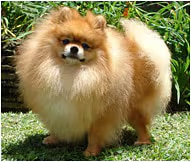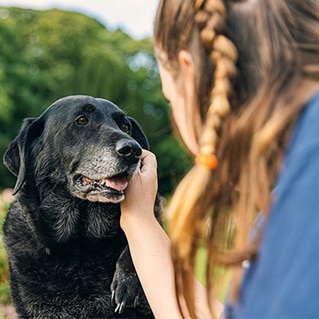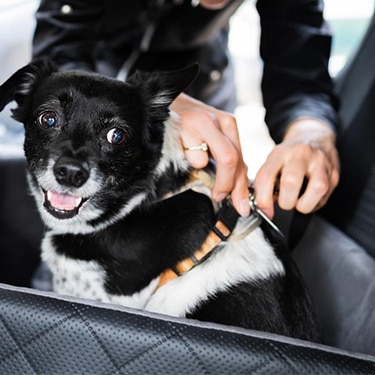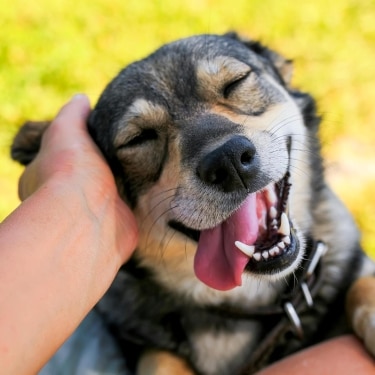They are often at mature size by seven to 10 months of age.
Pomeranians are easily recognized by their luxuriant fluffy double coat and foxy face with alert, prick ears. The body shape is fairly square, and the fluffy tail curls up and over the back. A thick ruff around the neck completes the picture of a dog that could handle the snows of northern Germany. The head is somewhat rounded with a distinct muzzle.
Pomeranians come in a wonderful array of colors. A rich red is most commonly associated with the breed, but everything from black to white to sable and shades in between are acceptable, even chocolate.
Pomeranians are generally perky, friendly little dogs. They do not seem to realize they are small in stature and will occasionally tackle large dogs or at least verbally threaten them!
These are active little dogs that do need daily exercise, even if it is just a walk around the block. They are quite intelligent and do well in obedience competitions despite a small independent streak. As they age, they are more amenable to being truly lap dogs.
Pomeranians are often good alert and alarm dogs and can be prone to excessive barking. They tend to be good with children, but children need to be cautioned that these are small dogs and not as sturdy as the larger breeds.
Pomeranians are usually easy to keep, although some are finicky eaters. They do not have a tendency toward obesity, probably because of their active nature. The double coat does require some regular grooming attention once or twice weekly, with daily sessions during shedding season.
Despite being small, Pomeranians do need regular exercise and thrive on training. They are very intelligent and enjoy learning tricks and performing. Poms generally get along well with other pets, but caution should be used mixing any toy breed with large breeds that might injure a toy dog accidentally. If raised with children they do quite well; if not, they may be reserved. Children need to be reminded that these smaller dogs may not be as sturdy as larger dogs, and interactions should be supervised.
Poms are excellent watchdogs with their alert attitude and their tendency to bark. They make very good companions for elderly folks because of their alertness and their small size.
The Pomeranian is considered to be a miniaturized Spitz-type dog. Germany, specifically Pomerania in the 1800s, seems to be the site of the first breeding programs, although these dogs were quite large. Queen Victoria became enamored of the breed; from her dogs, the size was bred down even further to the toy dog we recognize today.
Certainly the German spitz dogs must be ancestors of these charmers. Dogs were then chosen for smaller size and for the bright colors we see today instead of the standard gray or white spitz coloring. From the start, "poms," as they are often referred to, have been companion dogs with a little bit of watchdog duty worked in.
Adopt a pet. Change a life.
Are you prepared to adopt a pet? Use these tools to make sure you are ready for the commitment.
Adopt a pet. Change a life.
Are you prepared to adopt a pet? Use these tools to make sure you are ready for the commitment.























